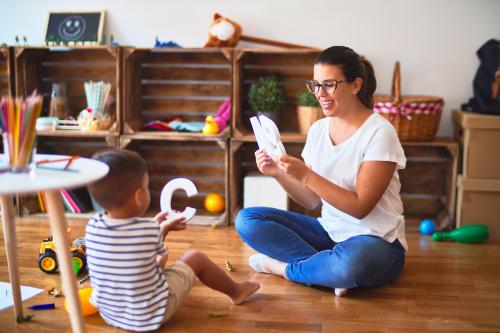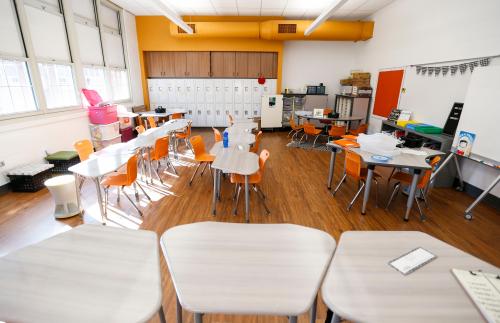On November 12, 2020, the online, open-access journal of the American Medical Association published an article penned by the esteemed Dr. Dimitri Christakis and colleagues suggesting that school closings created greater projected mortality rates than would have likely happened from COVID-19 if schools remained open. Based on data from published school closure announcements and school calendars across the United States, the authors estimated that, nationally, children ages 5 to 11 lost approximately 54 days of instruction, or a third of a year of learning time. Calculating what they called years of life lost, the authors projected that had schools remained open, there would be less mortality than for schools that closed.
The argument is an interesting one, and one that deserves serious discussion. Indeed, a recent study estimated that, had students returned in the fall of 2020, they would have made only a half-year of expected gains in math at most and two-thirds of a typical school year’s expected gains in reading. The collective impact of these losses was calculated by McKinsey & Company. In a model assuming that regular, in-person instruction does not resume until January 2021, the average American K-12 student may lose $61,000 to $82,000 in lifetime earnings due to educational disruptions faced during COVID-19. In other words, our sudden shift toward remote education is not trivial. This September, 74 percent of the 100 largest school districts in the United States selected remote learning as their only instructional method to begin the school year, affecting over 9 million students. This statistic, and the current fluctuations in school closures, make these estimates even more pronounced.
Calculating mortality rates between school opening and closing decisions, however, seems to make assumptions that confuse many of the issues that have surrounded both educational and health science. There is data to suggest that educational attainment levels are related to job outcomes, to financial security, and hence to mortality. Yet, we do not have data to suggest that the amount of time lost in school during the pandemic is related to education attainment levels.
Further, educational attainment, or the degree conferral, can take varied years to achieve. Christakis and colleagues estimated COVID-19 school closure impacts on educational attainment from teacher strikes in Argentina where economists have linked those closures to lower levels of high school graduation and subsequent degrees. These calculations were based, however, on strike-related local school closures—not closures across the country. It is not clear that the long-term disadvantage of not attending school when other children are remaining in school generalizes to the case of all children experiencing unprecedented educational changes. For example, it is likely that in the long run, the number of students admitted to college would not decrease even if there were universal learning loss linked to school closures. With COVID-19, educators have made herculean attempts to move to remote learning, and while data from online charter schools suggest that remote learning does not confer the benefits of in-class learning, surely some instruction is better than no instruction. Indeed, when extensive attempts were made to repair some of the loss after Hurricane Katrina, test scores, high school graduations, and college enrollment went up. The point is that learning loss is not inevitable after school closures. There is reason to believe that students will make up the time lost (though possibly not all of the learning lost) and will still graduate from high school or go to college. Given the unprecedented impact of COVID-19 on every aspect of life, it is likely that no data speak to this question.
Additionally, other important factors were ignored in this report. First, most school districts that stayed open have had to address teachers’ and staff’s concerns about returning to the classroom during the pandemic, staff illnesses, and quarantines when cases are identified. This led to substantial instability in classroom experiences for students and their families. Such instabilities reduce the quality and quantity of instruction and thus learning.
Second, Christakis and colleagues’ study estimated educational attainment based on reports of 25- to 29-year-olds in 2018 calculated with sex, race, and geographic state in mind. They then link educational attainment to mortality without attention to factors such as poverty. For example, a larger proportion of children from underserved urban communities do not graduate from high school than those from more affluent communities. Thus far, there is no data to suggest that this number will be exaggerated due to COVID-19. Even students from under-resourced environments are not necessarily less likely to graduate if they miss a year of in-class learning.
Treating the data uniformly without looking at moderating factors like poverty, parent education, and computer access, etc., renders the link to mortality rates suspect at best. Third, the calculation of learning loss and educational attainment is generally not a one-year calculation. Research shows that students who do fall behind remain behind as the years progress. Again, while this is possible in COVID-19 across all socioeconomic groups, it is not a given. Fourth and finally, children benefit from the learning and support from extended families, especially grandparents. The extent to which keeping schools open would have resulted in children, especially those living in poverty, losing these individuals was not considered in this analysis.
So, is it best to open schools despite the COVID-19 rates in the surrounding community? The data reported by Christakis et al. would suggest that it is. But problems with the calculation leave the question unresolved. And, all of this does not even account for the recent findings suggesting that while children are less likely than adults to get the virus, they might be as likely to transmit the virus as are adults—a concern that is worth weighing given that 26 of every 100,000 educators are estimated to have already contracted the disease.
There remains no simple answer to questions about school openings or closings. While this new research on projected child mortality rates is intriguing, too many of the assumptions in the manuscript are premature to make concrete decisions at this time.









Commentary
Does reopening schools lead to increased life expectancy? The data aren’t so simple.
November 23, 2020